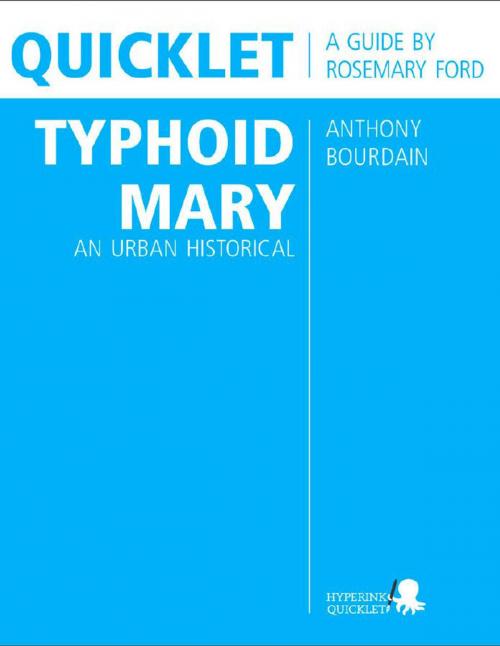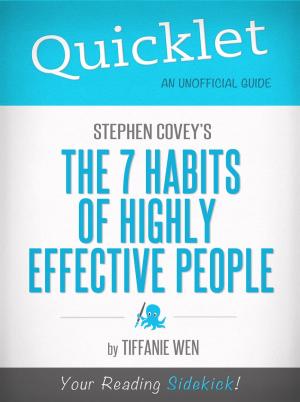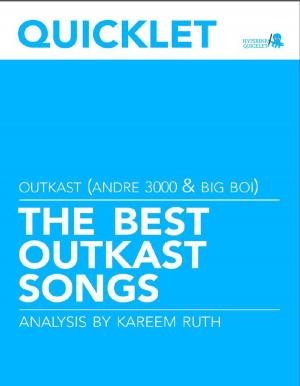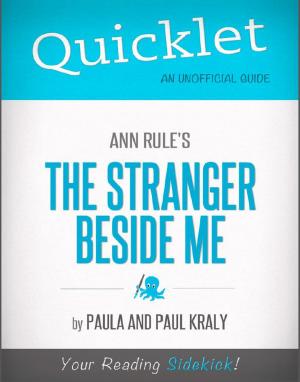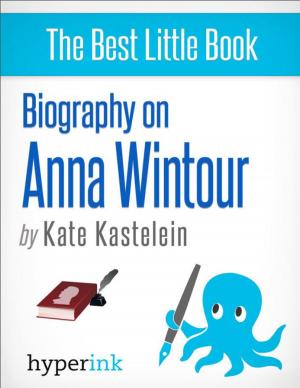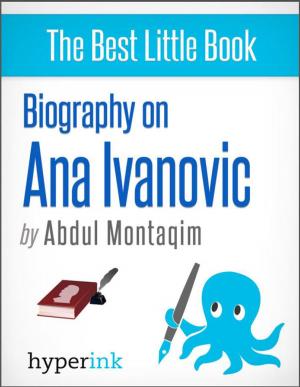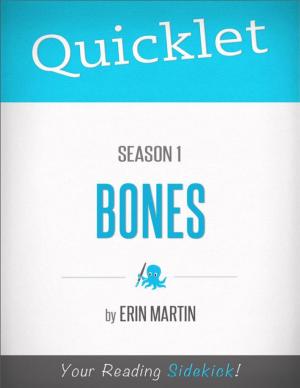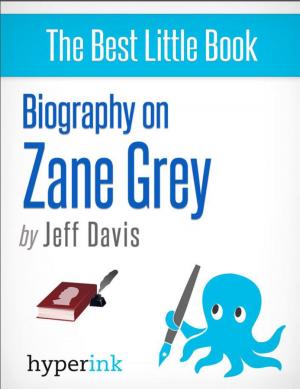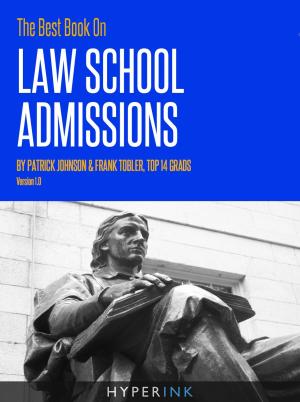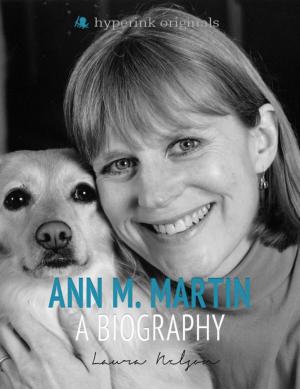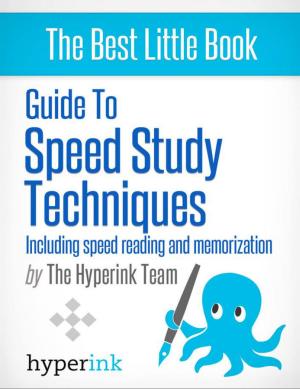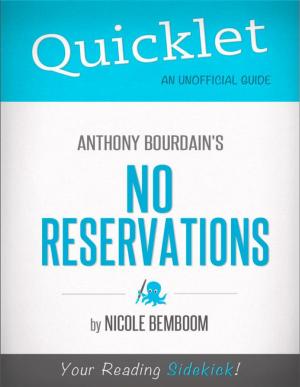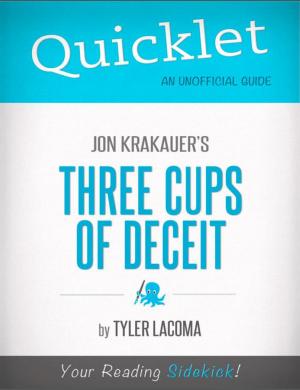Quicklet on Anthony Bourdain's Typhoid Mary: An Urban Historical (CliffNotes-like Summary and Analysis)
Nonfiction, Reference & Language, Study Aids, Book Notes, Art & Architecture, General Art| Author: | Ross Preston | ISBN: | 9781614646693 |
| Publisher: | Hyperink | Publication: | July 30, 2012 |
| Imprint: | Hyperink | Language: | English |
| Author: | Ross Preston |
| ISBN: | 9781614646693 |
| Publisher: | Hyperink |
| Publication: | July 30, 2012 |
| Imprint: | Hyperink |
| Language: | English |
ABOUT THE BOOK
There is no celebrity chef quite like Anthony Bourdain. He is known as much for his biting observations — and cast iron stomach — as he his for cooking.
Bourdain is currently in the eighth season of his Travel Channel hit show, “No Reservations.” In the series he travels to exotic locales to sample outlandish dishes. He’s famous for sampling lamb testicles, ant eggs, a seal eyeball, and a cobra. (Yet Chicken McNuggets top his list of bad meals, according to an interview he gave to AVClub.com.) This isn’t merely a rerun of “Fear Factor” — Bourdain shares the stories, cultures and rituals associated with these foods. The series has been nominated for five Emmys, taking home the prize in 2009.
Before he wrote books, stepped onto a TV set or picked up his first spatula, he was a typical New Yorker. Born in 1956, he studied at Vassar (he followed what he describes as “his current obsession” for the school, but rarely attended class). His life changed in the summer between his freshman and sophomore years, according to an article he wrote for Salon.com. That summer he spent with friends in Provincetown, on Cape Cod, working in the kitchen of an eatery called the Dreadnaught where he discovered his passion for life in the kitchen. That’s when he made the decision to leave Vassar and attend the Culinary Institute of America, which he graduated from in 1978.
Bourdain worked his way up from the bottom, starting out as a dishwasher, and holding every other position in the kitchen before he worked his way up to Executive Chef. His resume reads like a who’s who of restaurants: New York’s Supper Club, One Fifth Avenue and Sullivan’s. He’s currently the chef-at-large at Brasserie Les Halles, where he started as executive chef in 1998.
To date, he’s written three crime novels, a cookbook, and several bestsellers, including Kitchen Confidential and its follow-up, Medium Raw: A Bloody Valentine to the World of Food and the People Who Cook.
His writing career began with his New Yorker essay, “Don’t Eat Before Reading This,” in 1999. It was that piece and its resulting popularity that lead to Kitchen Confidential in 2000.
EXCERPT FROM THE BOOK
Chapter Four: The New Woman
Bourdain takes a break from the narrative to talk about the changing place of women in society. Here he talks about the strides women were making — breaking into careers once open only to men, at the cusp of getting the right to vote.
The men were not happy about this turn of events at all. Bourdain quotes several influential clergymen of the time decrying women who seemed to have forsaken their responsibilities at home to socialize, drink, gamble and work. In essence, all the things men were supposed to do.
How did this social revolution take place? Bourdain predictably traces the origin of the New Woman to the stomach, so to speak. Or more precisely, the empty stomach.
The true instigator of social revolution was starvation.
He notes the Irish Potato Famine of the mid-to-late 1840s caused a lot of social upheaval. Between the millions of dead, and the millions who left Ireland, it changed society throughly. Fewer people married, or fooled around, so there were fewer mouths to feed.
The women of Ireland, and the women of Ireland who came to America, had to make their own way in the world. It was an example that other immigrants and even “native born” Americans as they were called, would soon follow.
One of those women was Dr. Baker, who traded an education at Vassar for the Women’s Medical College of New York and would go on to become an influential figure in public health.
Bourdain shows that there were more than a few things Mary and Dr. Baker had in common...
...buy the book to continue reading!
ABOUT THE BOOK
There is no celebrity chef quite like Anthony Bourdain. He is known as much for his biting observations — and cast iron stomach — as he his for cooking.
Bourdain is currently in the eighth season of his Travel Channel hit show, “No Reservations.” In the series he travels to exotic locales to sample outlandish dishes. He’s famous for sampling lamb testicles, ant eggs, a seal eyeball, and a cobra. (Yet Chicken McNuggets top his list of bad meals, according to an interview he gave to AVClub.com.) This isn’t merely a rerun of “Fear Factor” — Bourdain shares the stories, cultures and rituals associated with these foods. The series has been nominated for five Emmys, taking home the prize in 2009.
Before he wrote books, stepped onto a TV set or picked up his first spatula, he was a typical New Yorker. Born in 1956, he studied at Vassar (he followed what he describes as “his current obsession” for the school, but rarely attended class). His life changed in the summer between his freshman and sophomore years, according to an article he wrote for Salon.com. That summer he spent with friends in Provincetown, on Cape Cod, working in the kitchen of an eatery called the Dreadnaught where he discovered his passion for life in the kitchen. That’s when he made the decision to leave Vassar and attend the Culinary Institute of America, which he graduated from in 1978.
Bourdain worked his way up from the bottom, starting out as a dishwasher, and holding every other position in the kitchen before he worked his way up to Executive Chef. His resume reads like a who’s who of restaurants: New York’s Supper Club, One Fifth Avenue and Sullivan’s. He’s currently the chef-at-large at Brasserie Les Halles, where he started as executive chef in 1998.
To date, he’s written three crime novels, a cookbook, and several bestsellers, including Kitchen Confidential and its follow-up, Medium Raw: A Bloody Valentine to the World of Food and the People Who Cook.
His writing career began with his New Yorker essay, “Don’t Eat Before Reading This,” in 1999. It was that piece and its resulting popularity that lead to Kitchen Confidential in 2000.
EXCERPT FROM THE BOOK
Chapter Four: The New Woman
Bourdain takes a break from the narrative to talk about the changing place of women in society. Here he talks about the strides women were making — breaking into careers once open only to men, at the cusp of getting the right to vote.
The men were not happy about this turn of events at all. Bourdain quotes several influential clergymen of the time decrying women who seemed to have forsaken their responsibilities at home to socialize, drink, gamble and work. In essence, all the things men were supposed to do.
How did this social revolution take place? Bourdain predictably traces the origin of the New Woman to the stomach, so to speak. Or more precisely, the empty stomach.
The true instigator of social revolution was starvation.
He notes the Irish Potato Famine of the mid-to-late 1840s caused a lot of social upheaval. Between the millions of dead, and the millions who left Ireland, it changed society throughly. Fewer people married, or fooled around, so there were fewer mouths to feed.
The women of Ireland, and the women of Ireland who came to America, had to make their own way in the world. It was an example that other immigrants and even “native born” Americans as they were called, would soon follow.
One of those women was Dr. Baker, who traded an education at Vassar for the Women’s Medical College of New York and would go on to become an influential figure in public health.
Bourdain shows that there were more than a few things Mary and Dr. Baker had in common...
...buy the book to continue reading!
